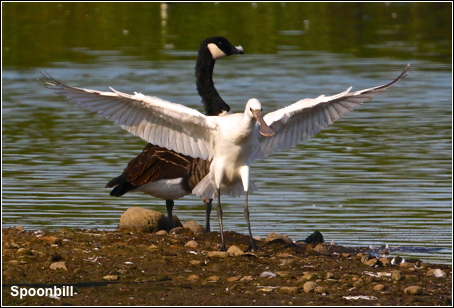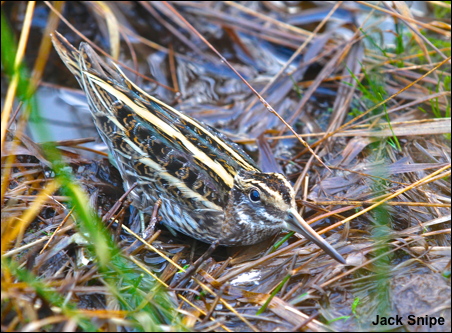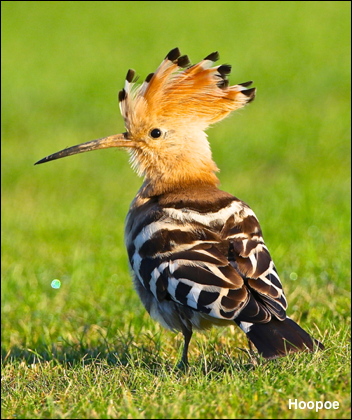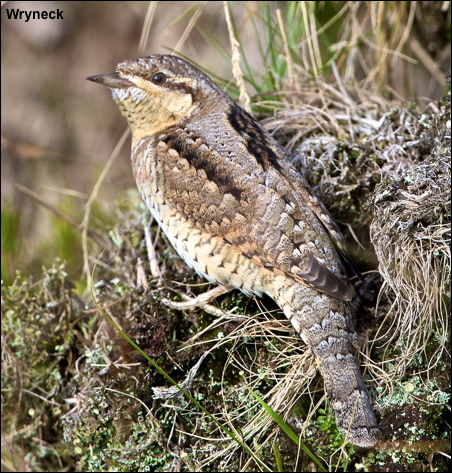October 31, 2020 at 2:19 pm
 While in Yorkshire the other week filming the Hoopoe I took the opportunity to see another new bird for me in the form of the Spoonbill. Young had fledged at a nearby lake and i soon caught up with a fledged young and an adult. I was told by a passing local birdwatcher that young Spoonbills are called Teaspoons! When I got home I checked all my bird-books and could find no reference to young Spoonbills being called teaspoons. However the computer came to the rescue and confirmed that young Spoonbills, usually when they are still in the nest, are in fact called Teaspoons as their bills are not as developed as the adults! Click here
While in Yorkshire the other week filming the Hoopoe I took the opportunity to see another new bird for me in the form of the Spoonbill. Young had fledged at a nearby lake and i soon caught up with a fledged young and an adult. I was told by a passing local birdwatcher that young Spoonbills are called Teaspoons! When I got home I checked all my bird-books and could find no reference to young Spoonbills being called teaspoons. However the computer came to the rescue and confirmed that young Spoonbills, usually when they are still in the nest, are in fact called Teaspoons as their bills are not as developed as the adults! Click here
October 24, 2020 at 6:00 pm
 To me the most exciting and challenging migrant of Autumn is the Jack Snipe. It becomes quite easy to encounter Redwings and Fieldfares but to come face to face with a Jack Snipe is a different ball-game.This Autumn I found my first on the 9th October and up to yesterday I have seen 26 – only one of which froze at my feet and gave me good views. click here
To me the most exciting and challenging migrant of Autumn is the Jack Snipe. It becomes quite easy to encounter Redwings and Fieldfares but to come face to face with a Jack Snipe is a different ball-game.This Autumn I found my first on the 9th October and up to yesterday I have seen 26 – only one of which froze at my feet and gave me good views. click here
October 17, 2020 at 8:52 pm
 Who would have thought that I would ever spend an hour on a Cricket pitch in Yorkshire photographing a bird that I had never seen before but that is what happened last week. The spectacular bird involved was a Hoopoe, that should have been in Spain, but for some reason decided the grubs in a Yorkshire cricket pitch were more to its liking. It had been there a week before I decided to go and I would have stayed longer than an hour but social distancing was becoming a problem with more than fifty people on the pitch so I left. The Hoopoe must have felt the same for it also left the next day! It was certainly a spectacular subject and it must have been a bonus for the cricket club as it disposed of grubs at one a minute! click here
Who would have thought that I would ever spend an hour on a Cricket pitch in Yorkshire photographing a bird that I had never seen before but that is what happened last week. The spectacular bird involved was a Hoopoe, that should have been in Spain, but for some reason decided the grubs in a Yorkshire cricket pitch were more to its liking. It had been there a week before I decided to go and I would have stayed longer than an hour but social distancing was becoming a problem with more than fifty people on the pitch so I left. The Hoopoe must have felt the same for it also left the next day! It was certainly a spectacular subject and it must have been a bonus for the cricket club as it disposed of grubs at one a minute! click here
October 11, 2020 at 1:20 pm
 There is little doubt that the Pack Horse bridge at Carrbridge, in the Spey valley, is one of the finest in Scotland. I have always wanted to view it in its Autumn colours and last week it was exceptional. Built 304 years ago and almost washed away in 1829 it has stood the test of time and more recently the regular storms with global warming. It could never look more impressive than it did last week.
There is little doubt that the Pack Horse bridge at Carrbridge, in the Spey valley, is one of the finest in Scotland. I have always wanted to view it in its Autumn colours and last week it was exceptional. Built 304 years ago and almost washed away in 1829 it has stood the test of time and more recently the regular storms with global warming. It could never look more impressive than it did last week.
The Caledonian forests held Coal Tits, Crested Tits and Red Squirrels. Along the coast I was able to film a species that I had never filmed before when we came across Rock Pipits feeding amongst weeds in a harbour enclosure. Not quite as spectacular as the Wryneck of last week but a new photo species for me. click here
October 3, 2020 at 10:29 am
 Its hard to believe but you wait 70 years to see your first Wryneck and in the space of a month two turn up in Lancashire! The second one was found on the moors to the east of Burnley and as I was impressed with the first one I decided to chance my luck with the second. Luck is the appropriate word for on my first visit I only had distant views of the Wryneck. So I trekked onto the moor a second time and at first had no better fortune. I was on the point of leaving and was actually walking along the path that surrounds the reservoir when, there it was, on the bank less than ten feet away! What followed next was a magical ten minutes filming and admiring the amazing plumage of this very rare bird. At times its cryptic plumage blended in with the ground cover and made it very hard to see.
Its hard to believe but you wait 70 years to see your first Wryneck and in the space of a month two turn up in Lancashire! The second one was found on the moors to the east of Burnley and as I was impressed with the first one I decided to chance my luck with the second. Luck is the appropriate word for on my first visit I only had distant views of the Wryneck. So I trekked onto the moor a second time and at first had no better fortune. I was on the point of leaving and was actually walking along the path that surrounds the reservoir when, there it was, on the bank less than ten feet away! What followed next was a magical ten minutes filming and admiring the amazing plumage of this very rare bird. At times its cryptic plumage blended in with the ground cover and made it very hard to see.
Enjoy the gallery photos of what will probably be the Pennines best bird this winter. And, yes, if another one turns up I will definitely go to have a look!! click here
 While in Yorkshire the other week filming the Hoopoe I took the opportunity to see another new bird for me in the form of the Spoonbill. Young had fledged at a nearby lake and i soon caught up with a fledged young and an adult. I was told by a passing local birdwatcher that young Spoonbills are called Teaspoons! When I got home I checked all my bird-books and could find no reference to young Spoonbills being called teaspoons. However the computer came to the rescue and confirmed that young Spoonbills, usually when they are still in the nest, are in fact called Teaspoons as their bills are not as developed as the adults! Click here
While in Yorkshire the other week filming the Hoopoe I took the opportunity to see another new bird for me in the form of the Spoonbill. Young had fledged at a nearby lake and i soon caught up with a fledged young and an adult. I was told by a passing local birdwatcher that young Spoonbills are called Teaspoons! When I got home I checked all my bird-books and could find no reference to young Spoonbills being called teaspoons. However the computer came to the rescue and confirmed that young Spoonbills, usually when they are still in the nest, are in fact called Teaspoons as their bills are not as developed as the adults! Click here

 To me the most exciting and challenging migrant of Autumn is the Jack Snipe. It becomes quite easy to encounter Redwings and Fieldfares but to come face to face with a Jack Snipe is a different ball-game.This Autumn I found my first on the 9th October and up to yesterday I have seen 26 – only one of which froze at my feet and gave me good views.
To me the most exciting and challenging migrant of Autumn is the Jack Snipe. It becomes quite easy to encounter Redwings and Fieldfares but to come face to face with a Jack Snipe is a different ball-game.This Autumn I found my first on the 9th October and up to yesterday I have seen 26 – only one of which froze at my feet and gave me good views.  Who would have thought that I would ever spend an hour on a Cricket pitch in Yorkshire photographing a bird that I had never seen before but that is what happened last week. The spectacular bird involved was a Hoopoe, that should have been in Spain, but for some reason decided the grubs in a Yorkshire cricket pitch were more to its liking. It had been there a week before I decided to go and I would have stayed longer than an hour but social distancing was becoming a problem with more than fifty people on the pitch so I left. The Hoopoe must have felt the same for it also left the next day! It was certainly a spectacular subject and it must have been a bonus for the cricket club as it disposed of grubs at one a minute!
Who would have thought that I would ever spend an hour on a Cricket pitch in Yorkshire photographing a bird that I had never seen before but that is what happened last week. The spectacular bird involved was a Hoopoe, that should have been in Spain, but for some reason decided the grubs in a Yorkshire cricket pitch were more to its liking. It had been there a week before I decided to go and I would have stayed longer than an hour but social distancing was becoming a problem with more than fifty people on the pitch so I left. The Hoopoe must have felt the same for it also left the next day! It was certainly a spectacular subject and it must have been a bonus for the cricket club as it disposed of grubs at one a minute!  There is little doubt that the Pack Horse bridge at Carrbridge, in the Spey valley, is one of the finest in Scotland. I have always wanted to view it in its Autumn colours and last week it was exceptional. Built 304 years ago and almost washed away in 1829 it has stood the test of time and more recently the regular storms with global warming. It could never look more impressive than it did last week.
There is little doubt that the Pack Horse bridge at Carrbridge, in the Spey valley, is one of the finest in Scotland. I have always wanted to view it in its Autumn colours and last week it was exceptional. Built 304 years ago and almost washed away in 1829 it has stood the test of time and more recently the regular storms with global warming. It could never look more impressive than it did last week. Its hard to believe but you wait 70 years to see your first Wryneck and in the space of a month two turn up in Lancashire! The second one was found on the moors to the east of Burnley and as I was impressed with the first one I decided to chance my luck with the second. Luck is the appropriate word for on my first visit I only had distant views of the Wryneck. So I trekked onto the moor a second time and at first had no better fortune. I was on the point of leaving and was actually walking along the path that surrounds the reservoir when, there it was, on the bank less than ten feet away! What followed next was a magical ten minutes filming and admiring the amazing plumage of this very rare bird. At times its cryptic plumage blended in with the ground cover and made it very hard to see.
Its hard to believe but you wait 70 years to see your first Wryneck and in the space of a month two turn up in Lancashire! The second one was found on the moors to the east of Burnley and as I was impressed with the first one I decided to chance my luck with the second. Luck is the appropriate word for on my first visit I only had distant views of the Wryneck. So I trekked onto the moor a second time and at first had no better fortune. I was on the point of leaving and was actually walking along the path that surrounds the reservoir when, there it was, on the bank less than ten feet away! What followed next was a magical ten minutes filming and admiring the amazing plumage of this very rare bird. At times its cryptic plumage blended in with the ground cover and made it very hard to see.